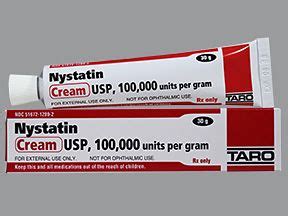When it comes to accurately measuring the flow of fluids, gases, or other materials in industrial processes, flow meters are invaluable tools. Among the various types of flow meters available, those capable of peak measurement offer a unique advantage. Peak measurement in flow meters refers to the ability to capture the highest flow rates or pressures during a specific period, which is crucial for applications where transient or short-term flow fluctuations can significantly impact operation efficiency, safety, or product quality.
Understanding Flow Meter Types
Before diving into the specifics of peak measurement, it’s essential to understand the different types of flow meters and how they operate. The primary categories include:
- Differential Pressure Flow Meters: These measure flow by creating a differential pressure across an element (like an orifice plate) in the flow path. The flow rate is directly proportional to the square root of the differential pressure.
- Velocity Flow Meters: Examples include magnetic and ultrasonic flow meters. They measure the velocity of the fluid and, knowing the pipe’s cross-sectional area, calculate the flow rate.
- Positive Displacement Flow Meters: These meters measure flow by isolating a known volume of fluid and counting the number of times this volume is filled and emptied.
- Mass Flow Meters: These meters directly measure the mass flow rate, often using Coriolis force or thermal principles.
Importance of Peak Measurement
Peak measurement is not just about identifying the highest flow rate but also understanding when and why these peaks occur. This information can be critical for several reasons:
- System Design and Optimization: Knowing the peak flow rates helps in designing systems that can handle these maximum loads without failing or underperforming.
- Maintenance and Repair: Identifying peak flows can indicate potential problem areas or bottlenecks in the system, guiding maintenance and repair efforts.
- Safety: In applications where high flow rates or pressures could pose safety risks, monitoring peaks ensures that safety protocols and equipment can handle these conditions.
- Energy Efficiency: Understanding peak demands can help in optimizing energy consumption, as systems can be designed or adjusted to operate more efficiently under these conditions.
Selecting the Right Flow Meter for Peak Measurement
Choosing the appropriate flow meter for peak measurement involves considering several factors, including:
- Accuracy and Range: The meter must be able to accurately measure flow rates across the expected range, including the peak values.
- Response Time: For capturing transient peaks, the flow meter’s response time is crucial. A faster response time allows for more accurate peak detection.
- Repeatability and Reliability: The meter should consistently provide reliable measurements over time, even under varying conditions.
- Compatibility: Ensure the meter is compatible with the fluid or gas being measured and the operating conditions (pressure, temperature, etc.).
Best Practices for Peak Measurement
- Calibration: Regularly calibrate the flow meter to ensure accuracy, especially if the operating conditions change.
- Installation: Proper installation is key to accurate measurement. Follow the manufacturer’s guidelines and consider factors like straight pipe runs and avoiding areas with turbulence.
- Data Logging: Implement a data logging system to capture and analyze peak flow events over time. This can help in identifying patterns or issues.
- Maintenance: Regular maintenance is crucial for ensuring the meter continues to provide accurate measurements. This includes cleaning the meter, checking for wear, and replacing parts as necessary.
Common Challenges and Solutions
- Noise and Interference: Electrical noise or mechanical vibrations can interfere with flow meter operation. Solutions include proper grounding, shielding, and using noise-filtering technologies.
- Fluid Properties: Changes in fluid properties (viscosity, density) can affect measurement accuracy. Using meters that can compensate for these changes or regularly updating calibration can help.
- Pressure and Temperature Effects: Ensure the meter is rated for the operating pressures and temperatures and consider using meters with built-in pressure and temperature compensation.
Future Trends in Flow Measurement
The field of flow measurement is evolving, with advancements in technology offering improved accuracy, reliability, and functionality. Some trends include:
- Non-invasive Techniques: Ultrasonic and magnetic flow meters are becoming more prevalent due to their non-invasive nature, which reduces maintenance and increases safety.
- Smart Flow Meters: Many modern flow meters come equipped with digital communications and can be integrated into broader process control systems, enabling real-time monitoring and data-driven decision-making.
- Internet of Things (IoT) Integration: The integration of flow meters with IoT platforms allows for remote monitoring, predictive maintenance, and more efficient operation.
Conclusion
Peak measurement in flow meters is a critical aspect of managing and optimizing industrial processes. By understanding the principles of flow measurement, selecting the right meter for the application, and following best practices for installation, operation, and maintenance, industries can ensure accurate and reliable peak flow detection. This, in turn, can lead to improved safety, efficiency, and productivity. As technology continues to advance, the capabilities and applications of flow meters will expand, offering even more sophisticated solutions for peak measurement and process optimization.
What are the primary types of flow meters used for peak measurement?
+The primary types include differential pressure flow meters, velocity flow meters, positive displacement flow meters, and mass flow meters. Each has its unique operating principle and is suited for different applications.
Why is peak measurement important in industrial processes?
+Peak measurement is crucial for system design, optimization, maintenance, safety, and energy efficiency. It helps in identifying the maximum loads the system can handle, indicating potential bottlenecks, ensuring safety, and optimizing energy consumption.
How do you select the right flow meter for peak measurement?
+Selection involves considering factors such as accuracy and range, response time, repeatability and reliability, and compatibility with the fluid or gas and operating conditions. The meter should accurately measure peak flows without compromising on reliability or requiring excessive maintenance.


